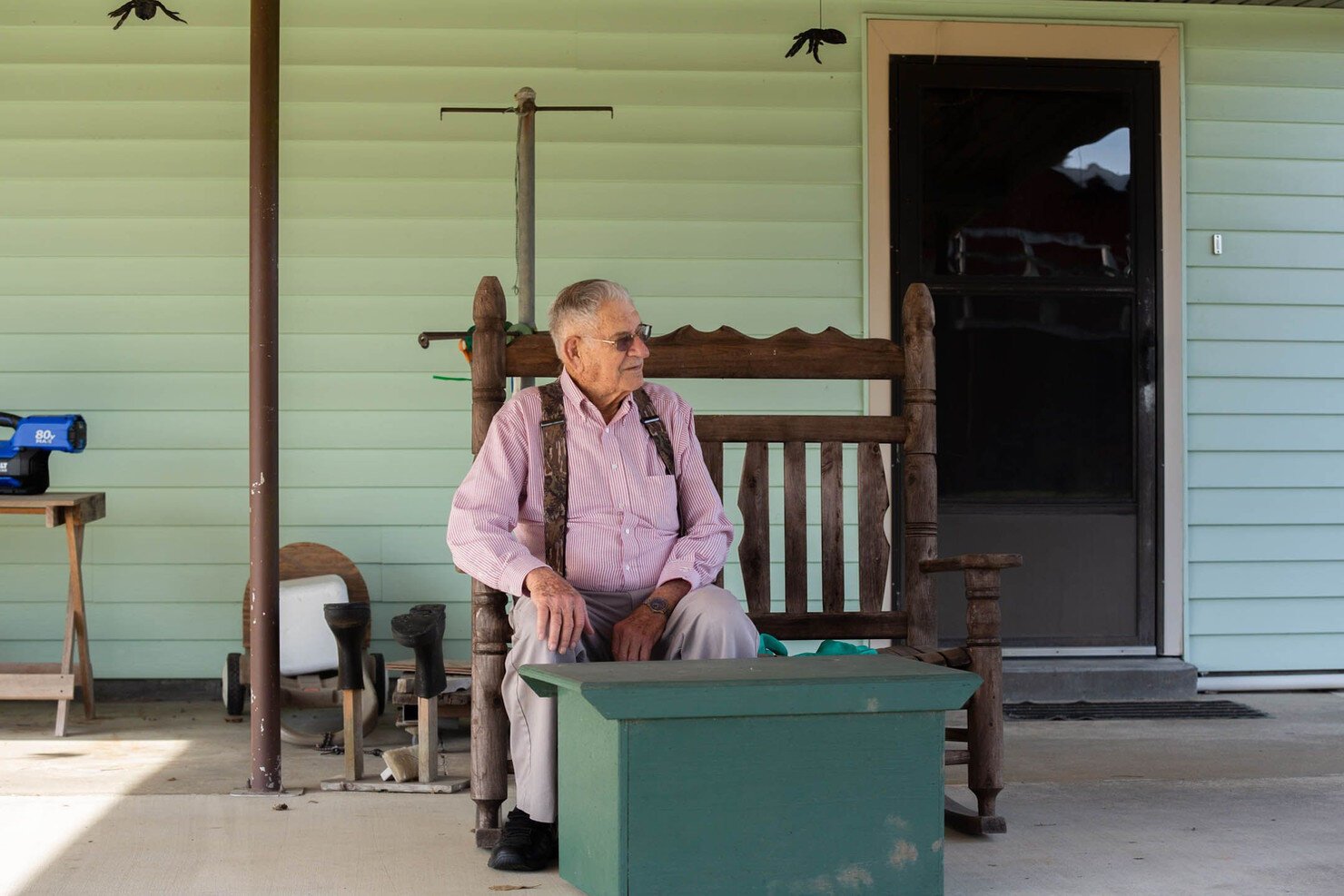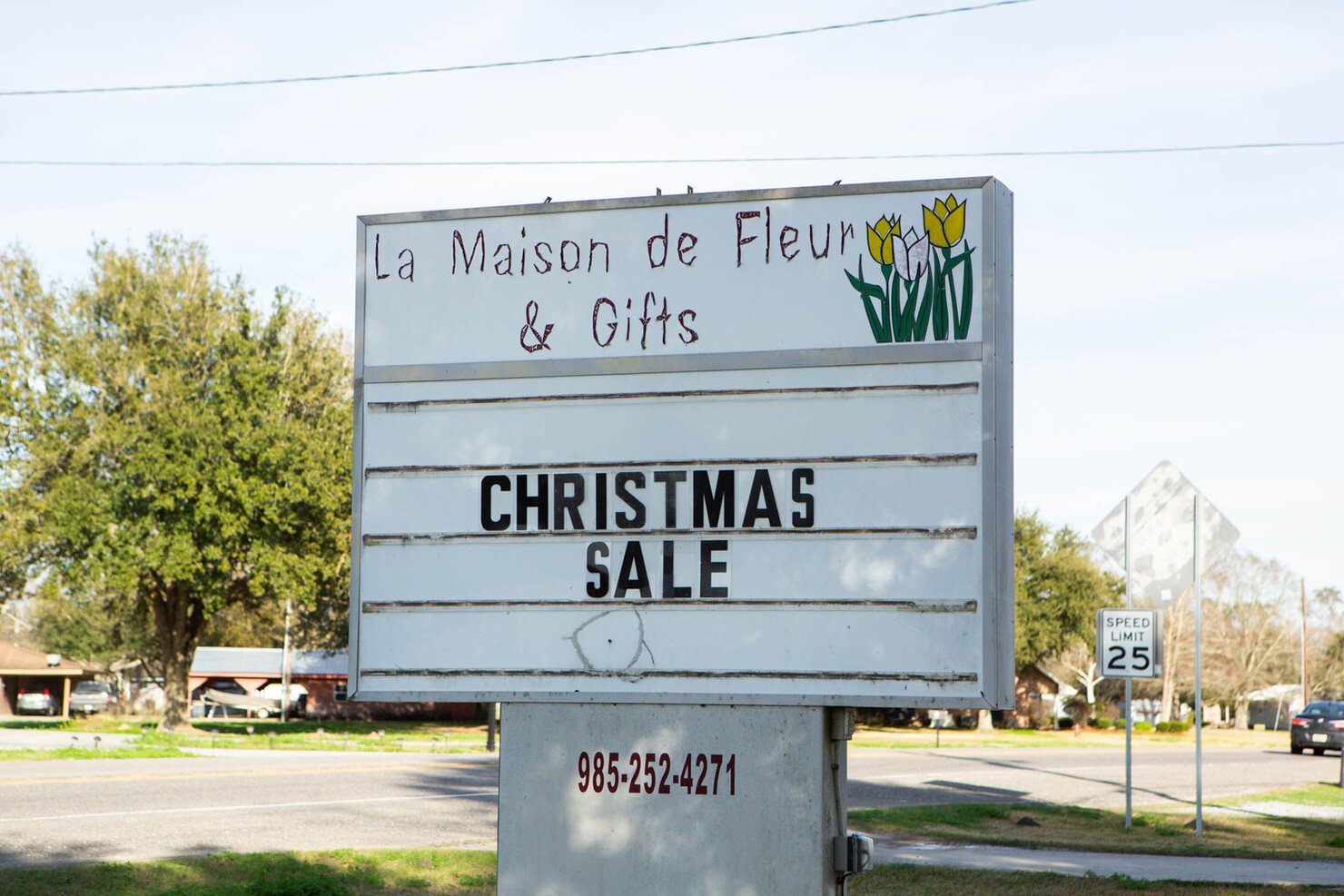Residents of Pierre Part Keep French Alive
Thanks to an effort by elders and children enrolled in an immersion program, this small town has one of the highest percentages of French speakers in the nation.
By Sara Guillot
“I love you grand comme ça,” my grandfather would say to me, his arms outstretched as far as he could reach. I was young, before school age, and the words were foreign to me. My grandfather, who is not from here, did not grow up speaking French. However, in Pierre Part, where we’re from, it is nearly impossible to live your life without learning some of the colloquialisms.
Pierre Part is a small town located in Assumption Parish, first settled by Acadians in the late 17th century. Today, nearly 40 percent of its residents still speak at least some French, according to the United States Census Bureau, which is one of the highest percentages of any town in the country. Although the number of native French speakers has declined over the years, the language and culture hold a special place in the hearts of the community.
I started to finally learn the town’s heritage language years later through the French immersion program at Pierre Part Elementary. Only then was I finally able to understand what my grandfather was telling me.
Eventually, I saw French more like a newfound superpower. I could listen to the adults gossiping around town, able to understand what they were saying without giving myself away. When my little sister started to learn French, as well, we treated the language like a secret code that was foreign to our anglophone parents. It wasn’t until much later that I was able to appreciate just what learning French meant to me and my community.
Ray Crochet grew up speaking Louisiana French in Pierre Part. Ethan Castille/Télé-Louisiane
French in Pierre Part began a slow decline when children started to attend public schools in the mid-20th century after the Louisiana Constitution of 1921 declared that the language of instruction in the State’s public schools must be English despite the French-speaking majorities in many communities. Ray Crochet, who grew up in Pierre Part, told me that although his teachers discouraged children from speaking French in class, they were considerate of how difficult it was for them at first.
“They were understanding,” he said. “They could not teach well unless they understood. We were just as foreign to them as they were to us, and they could tell when you were trying your best.” He explained how he got excited to answer a question in class, only for the words to come out half in English and the other in French.
As he grew up, Crochet endured the stigma that outsiders associated with his native tongue. There was a language barrier that kept him and others from Pierre Part socially separated from the rest of the parish, which by that point had embraced English on a larger scale.
“Since you couldn’t express yourself in English as well as the next person, it was registered in some people’s minds as having a lack of intelligence,” he said, referring to working alongside anglophones. “Only intelligence is not measured by what language you speak, or even how fluent your language is.”
Crochet admits to still reverting back to French frequently when speaking with his wife, Bessie, or when meeting up with his old friends. He mentioned how much more naturally French came to them, and how they were more comfortable speaking it than English.
Despite the decades-long downward trajectory of francophones in Louisiana, many Pierre Part residents insisted on passing down the language. Carol Ann Aucoin, former principal of Pierre Part Primary School, gifted the language to her daughters because their grandparents and great-grandparents spoke French.
“My girls spoke French not because they learned it in school, but because we thought it was only fair that they had the ability to communicate with them,” she said.
In 1990, Aucoin was approached by then-superintendent of schools, Ed Cancienne, to discuss improvements to the education system in Pierre Part. Aucoin expressed her desire to start a French immersion program. Cancienne gave her a green light, and she garnered overwhelming support from residents, as well as some of the teachers in the school.
French signs in Pierre Part, Louisiana, where around 40 percent of the population speaks French. Ethan Castille/Télé-Louisiane
In 1991, the French immersion program in Pierre Part officially started with two grades, kindergarten and first grade, making it one of the longest-running programs in the state.
“We thought it best to start with those two classes, and then add another grade each year that passed, all the way through eighth grade,” said Ruth Blanchard, former French teacher at Pierre Part Primary and Assumption High School. “That way, the children were first exposed to the language at a time when they could learn French alongside their home language, and then build upon that foundation as they progressed through school.”
Every day, Blanchard taught half an hour of French to students ranging from kindergarten to fourth grade who were not enrolled in the immersion program. This allowed all of the students to have some exposure to French, even if they were not part of the program.
It was important to the teachers and faculty that they get the community involved. Students participated in various events around the town, such as singing for the Christmas tree lighting, and serving at the French mass at St. Joseph the Worker Catholic Church.
“It meant so much to the community to see these young people speaking French,” Blanchard said. “So many of the older people showed up to mass because they were the ones who could remember having it in French. They never thought they would get the chance to hear it again.”
Students were also involved with the Fais-Do-Do, a Cajun food and music event hosted by Les Amis du Français de Pierre Part, a nonprofit organization that aims to protect the immersion program, in order to showcase the town’s heritage for the younger generations.
Christopher Templet was a student in the French Immersion program from 2006 to 2015 partly because his family members, especially on his father’s side, speak French. At the end of the program, he felt that he was truly bilingual. Now, he will speak French with his family, and he has made francophone friends at school.
“French is something I am going to keep with me forever,” he said. “It allowed me to really feel in touch with the roots of where I’m from. I have a better understanding of life in Pierre Part, of live in general, knowing that this is what my ancestors did. It truly helped me build my identity.”
While some of the immersion students ended their journey after completing the program, there are some who have fully embraced the language, and made it a part of their daily lives, such as Erin Barbier, who was a part of the first class in 1991. Although French faded from her life for a number of years during high school, she was drawn back to it in her senior year. After graduation, she continued to study French in college.
Now she is the world languages instructional coordinator with the Austin Texas Independent School District, and she serves as the immediate past president of the Texas Foreign Language Association. She has opened two French programs in Texas, both of which are still active. Her current position in administration allows her to play a bigger part in helping students who are seeking to learn a second language.
“Pierre Part is a very small town, but the French Immersion program opened my eyes to the history of what it meant to be Cajun, what it meant to come from a family of French speakers,” Barbier said.


